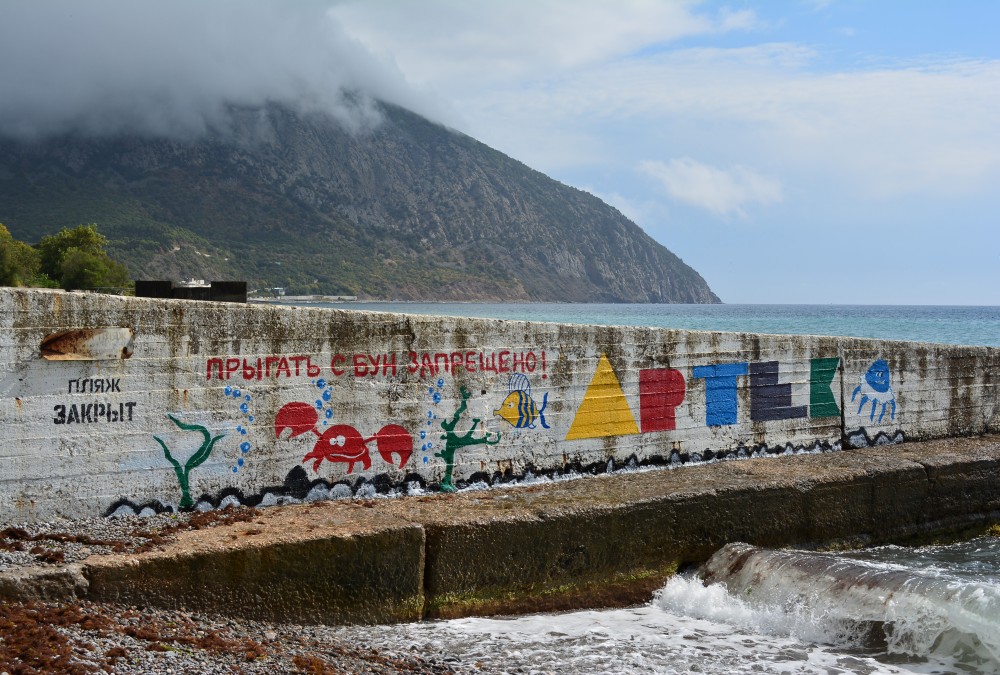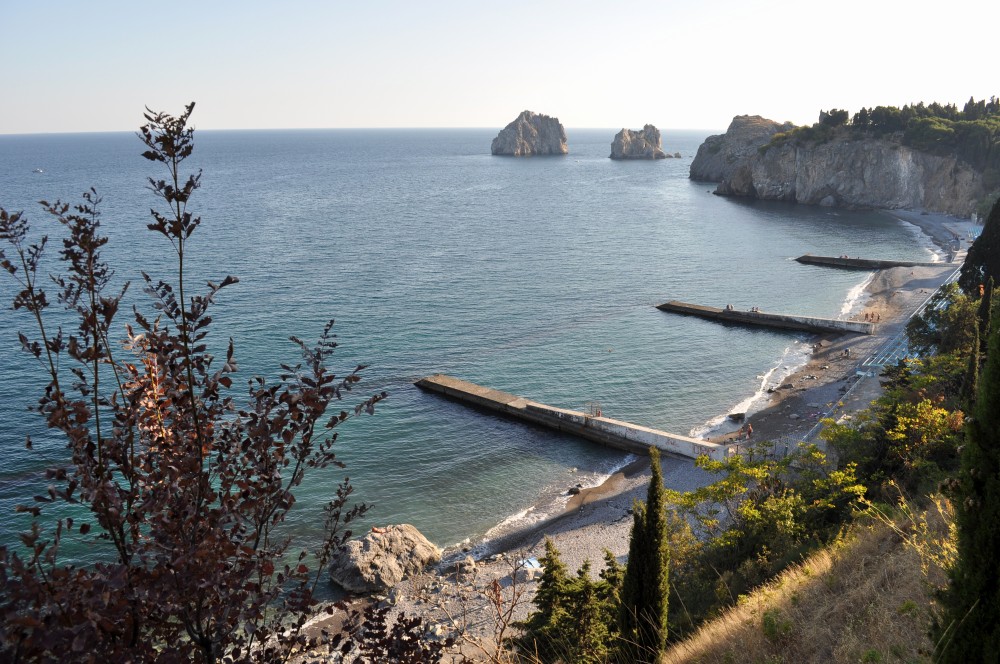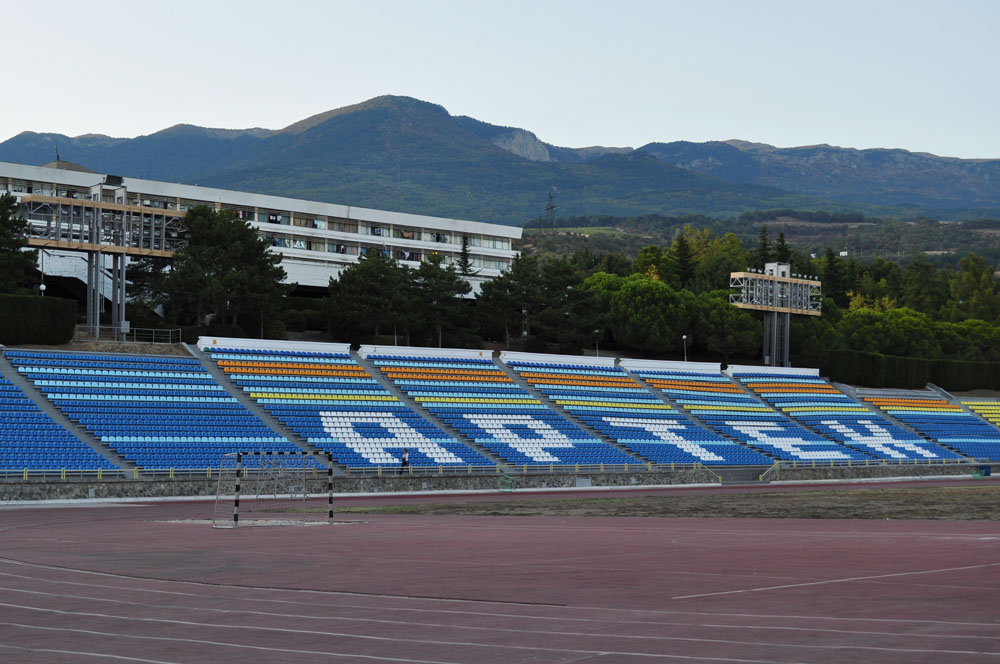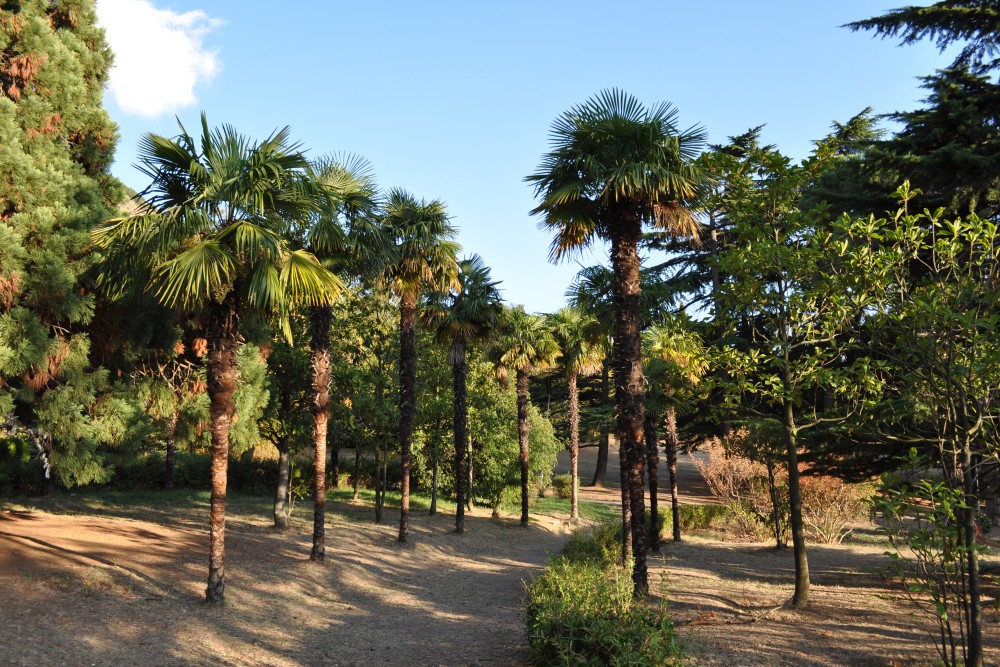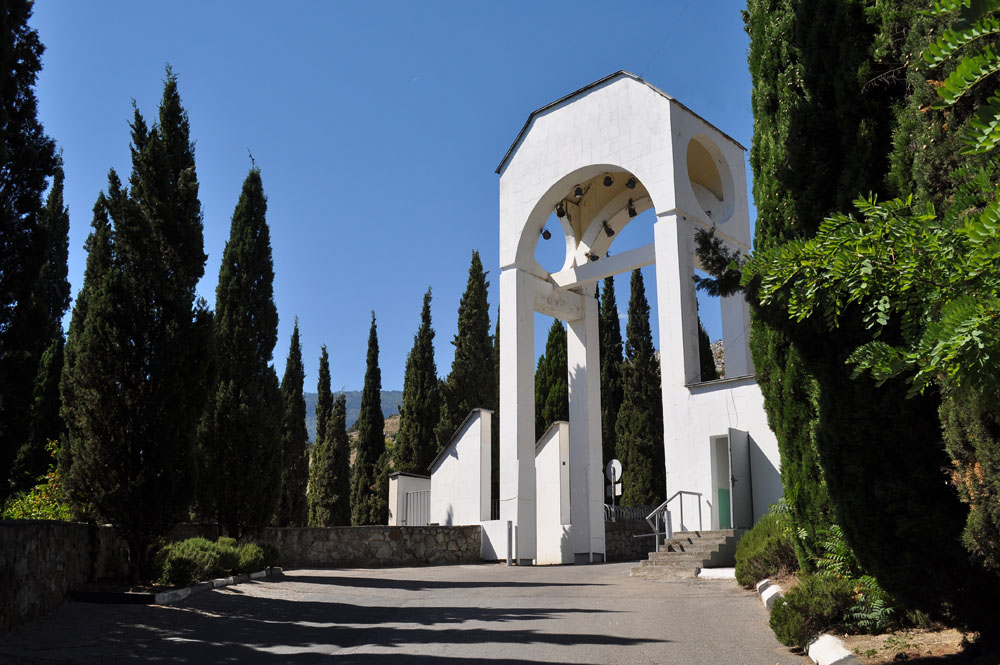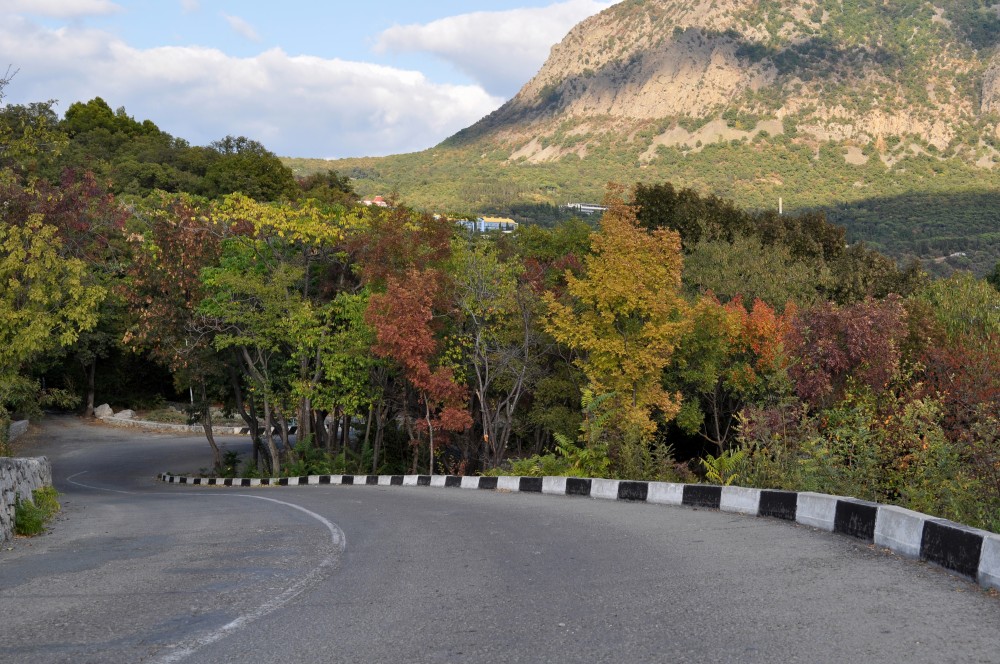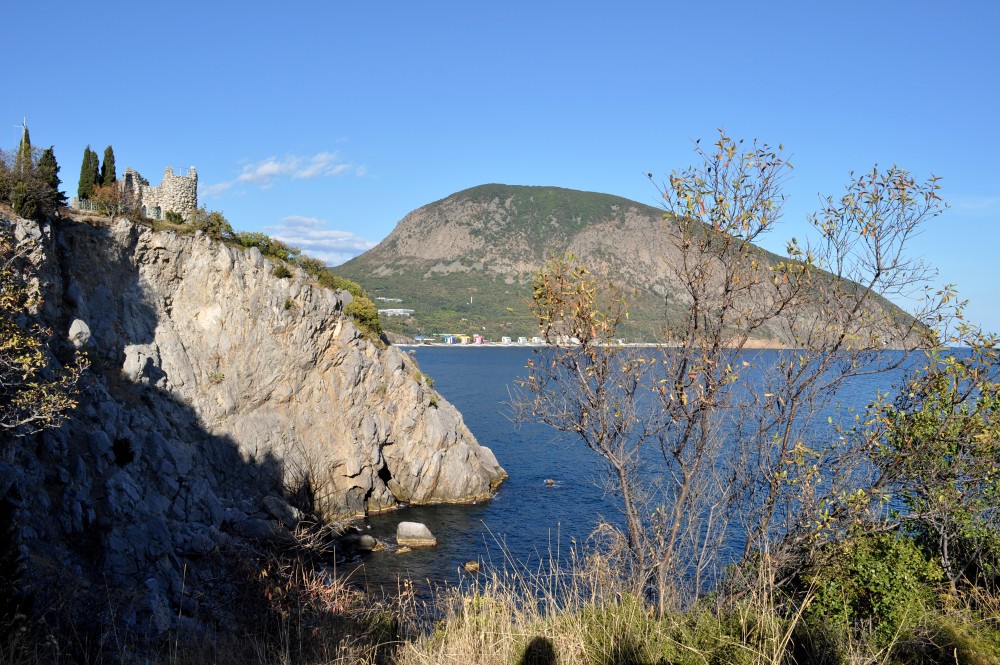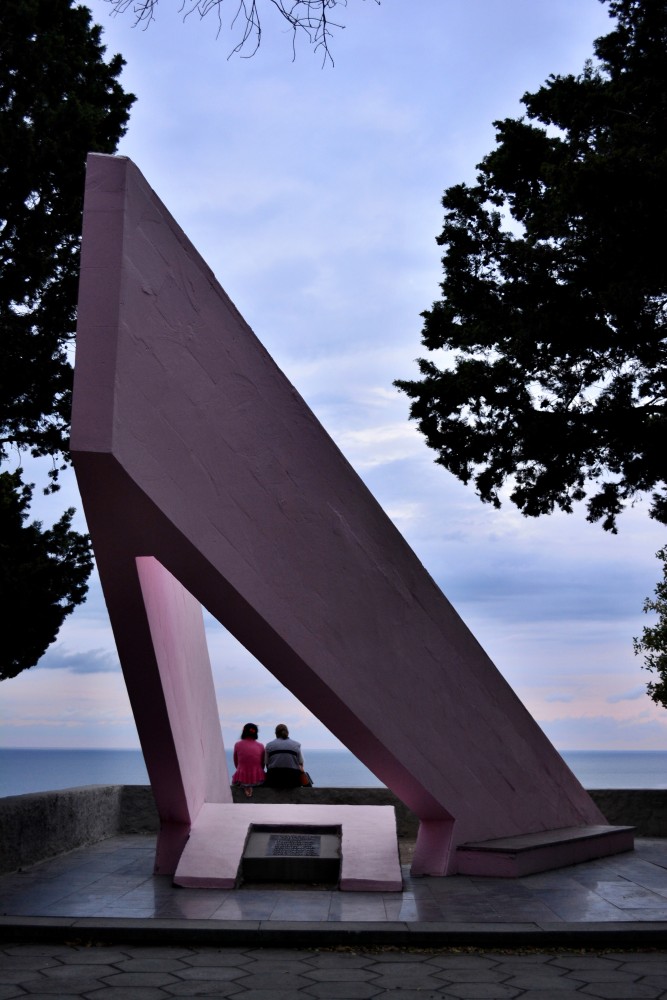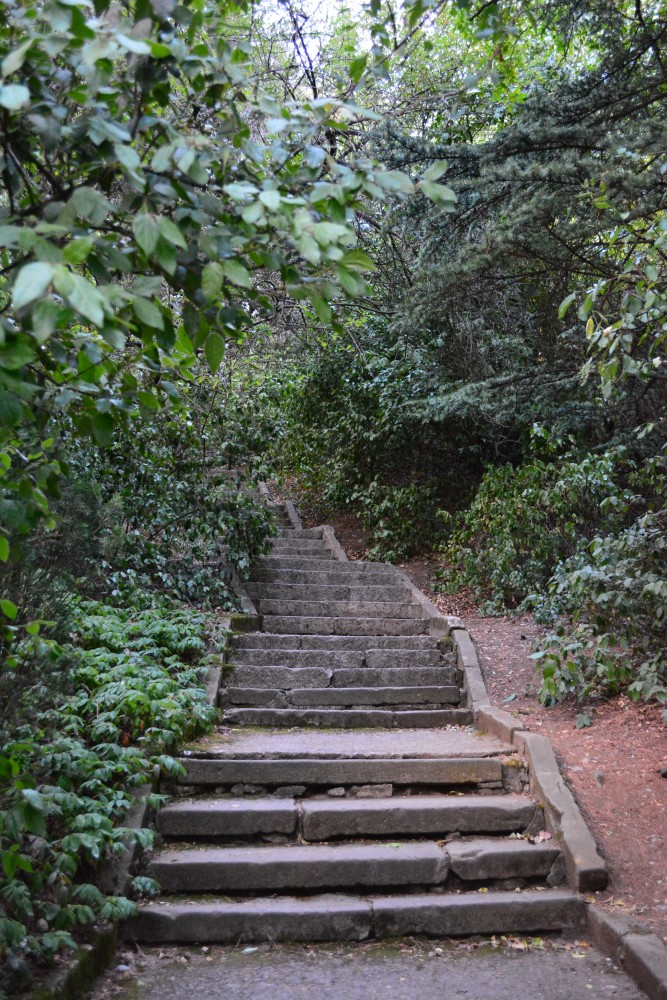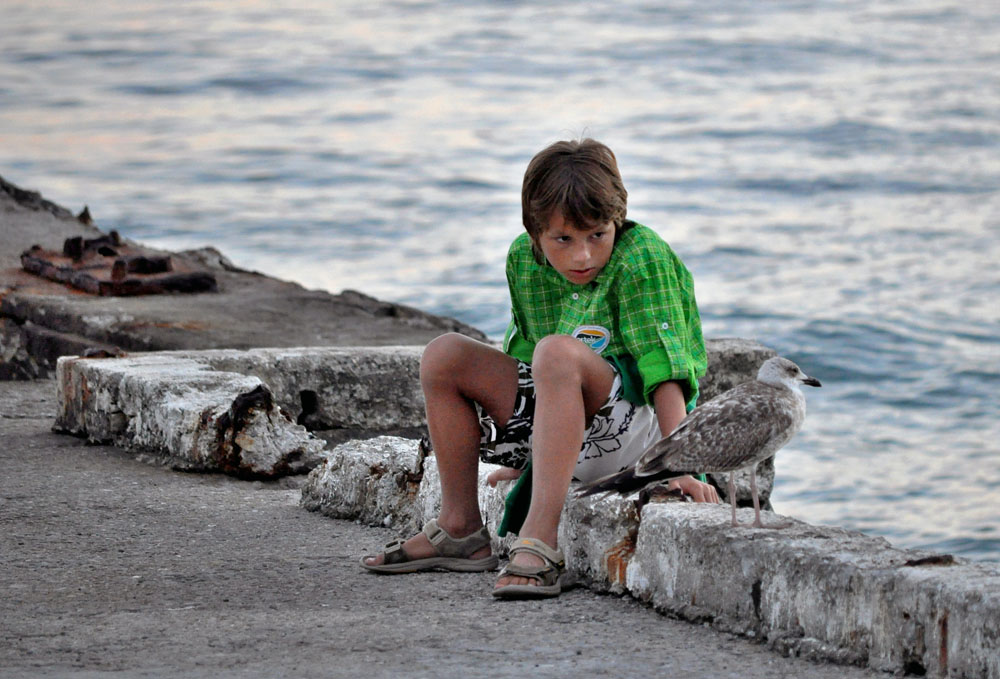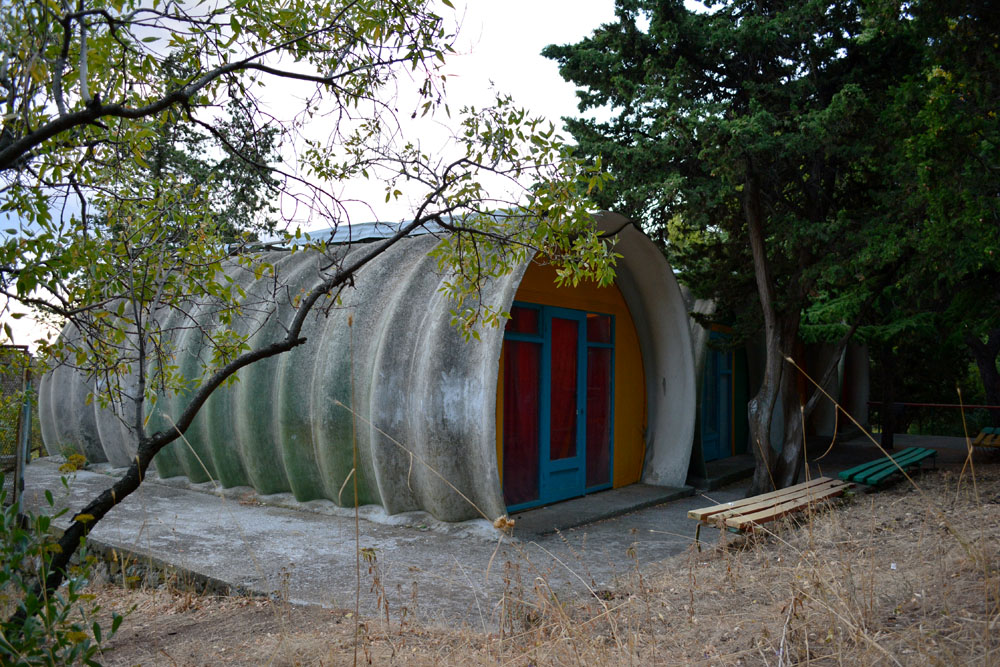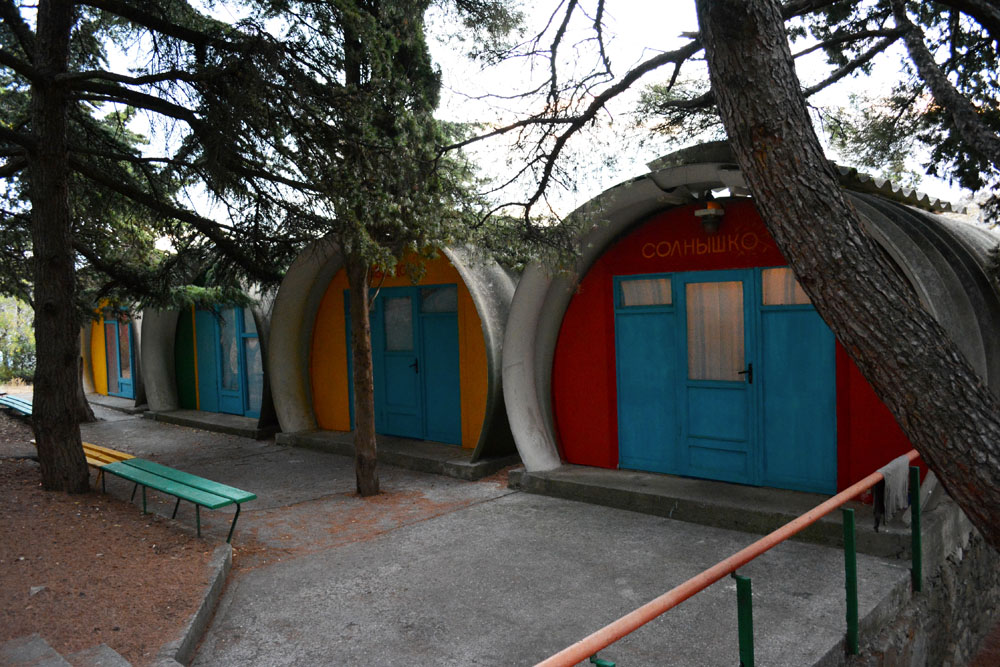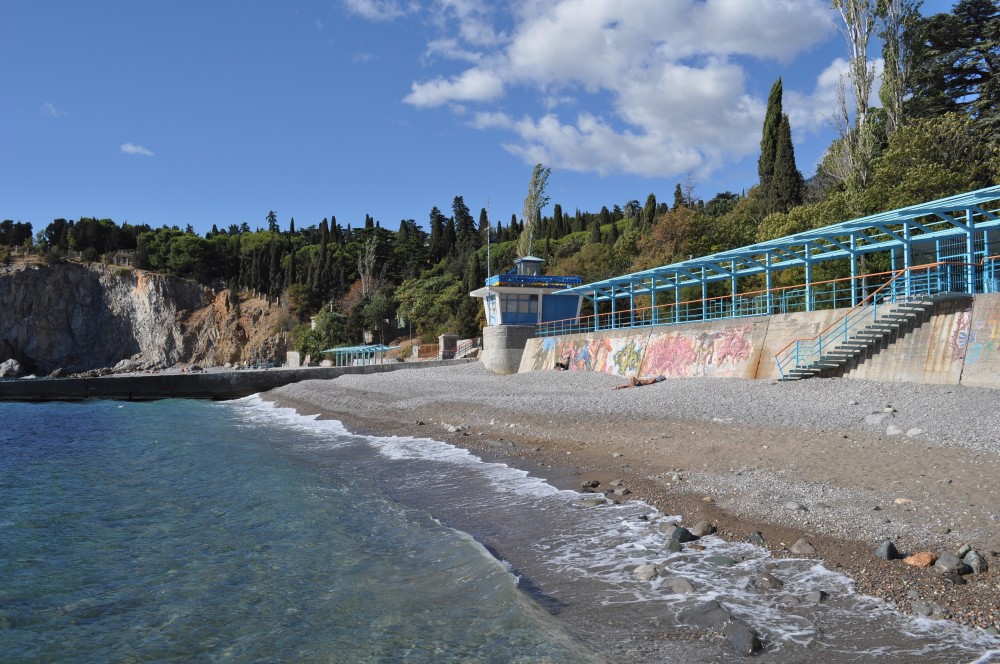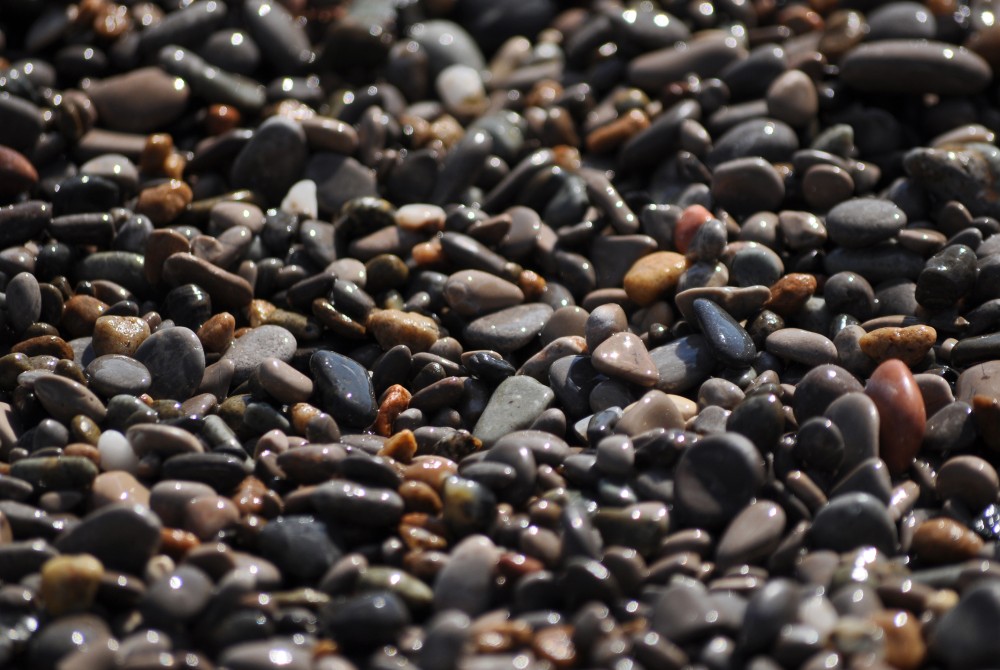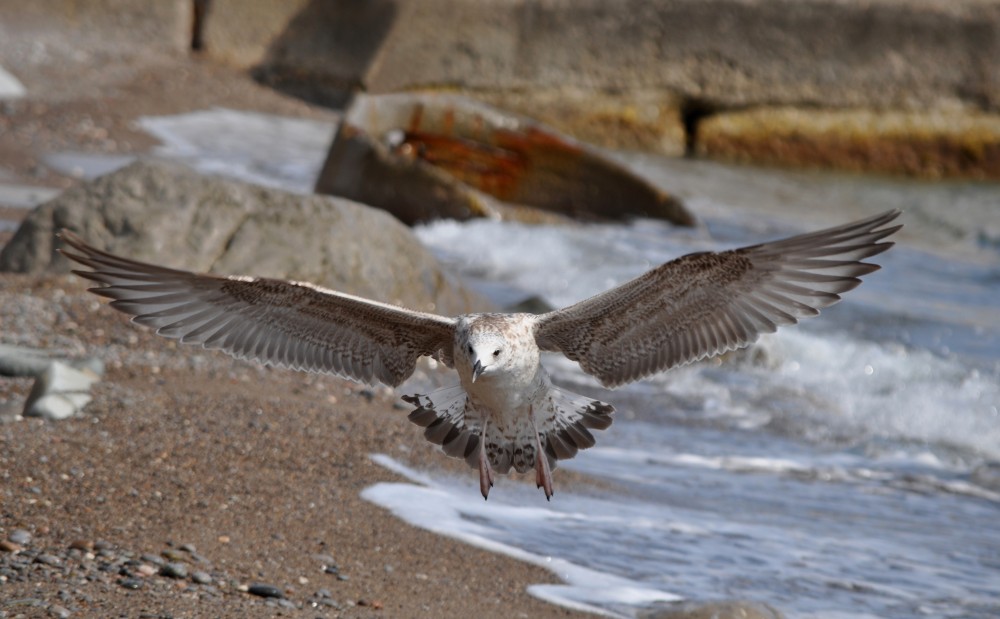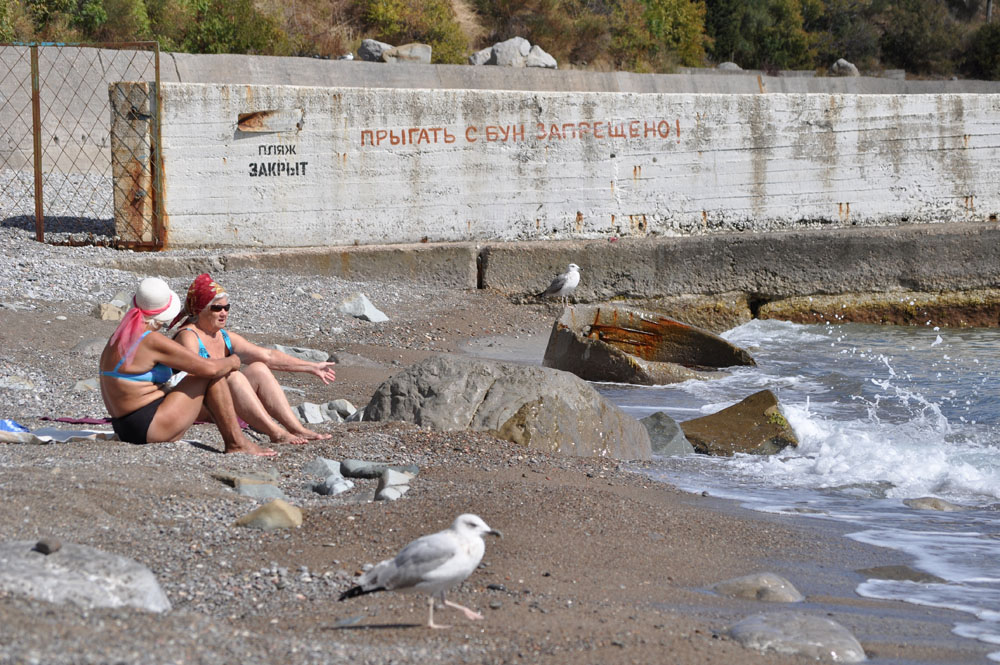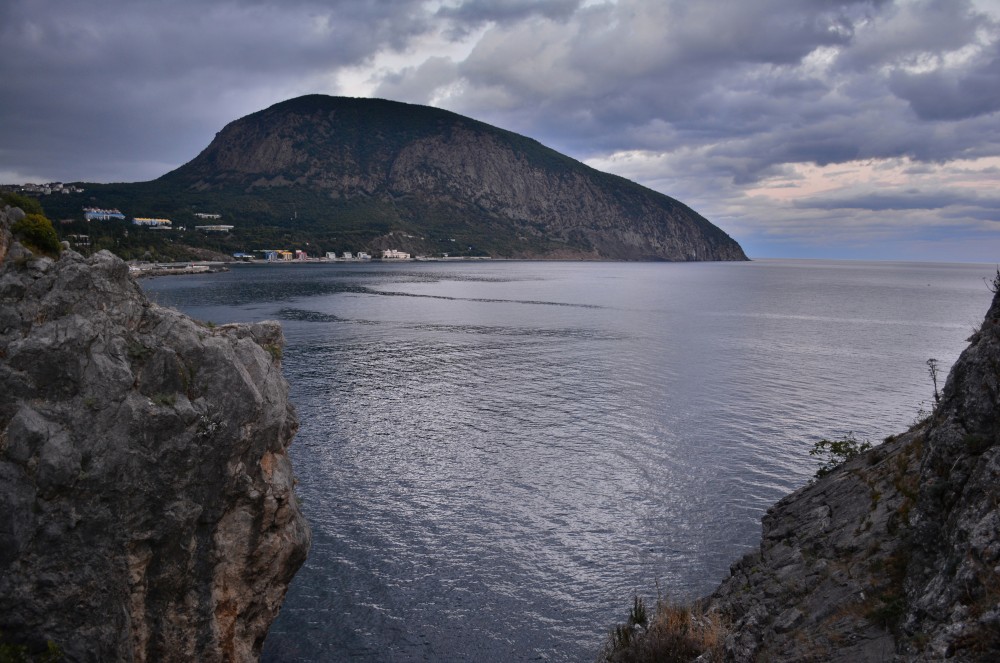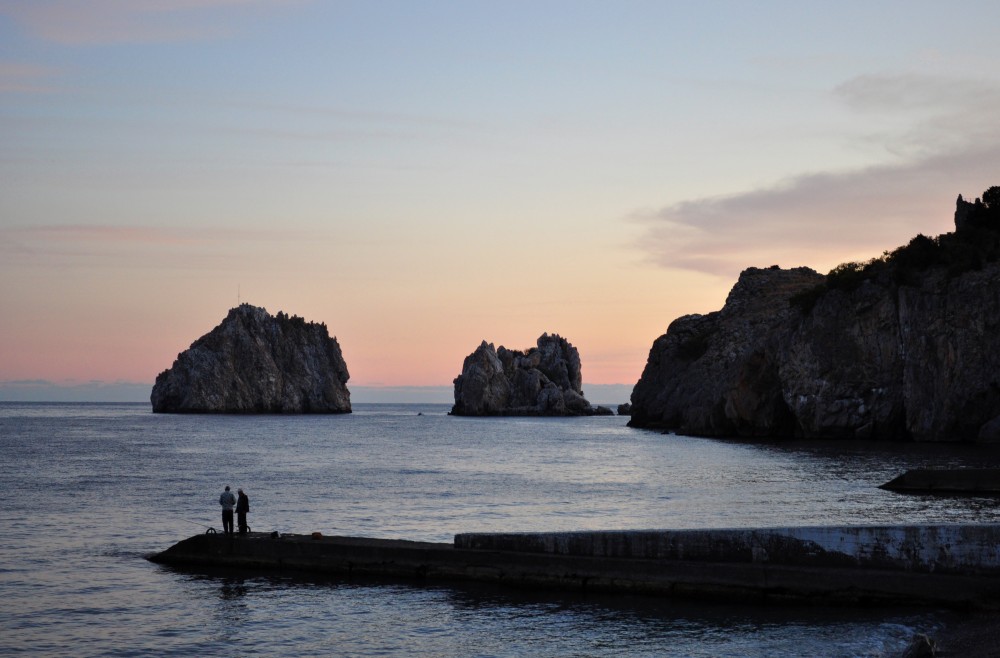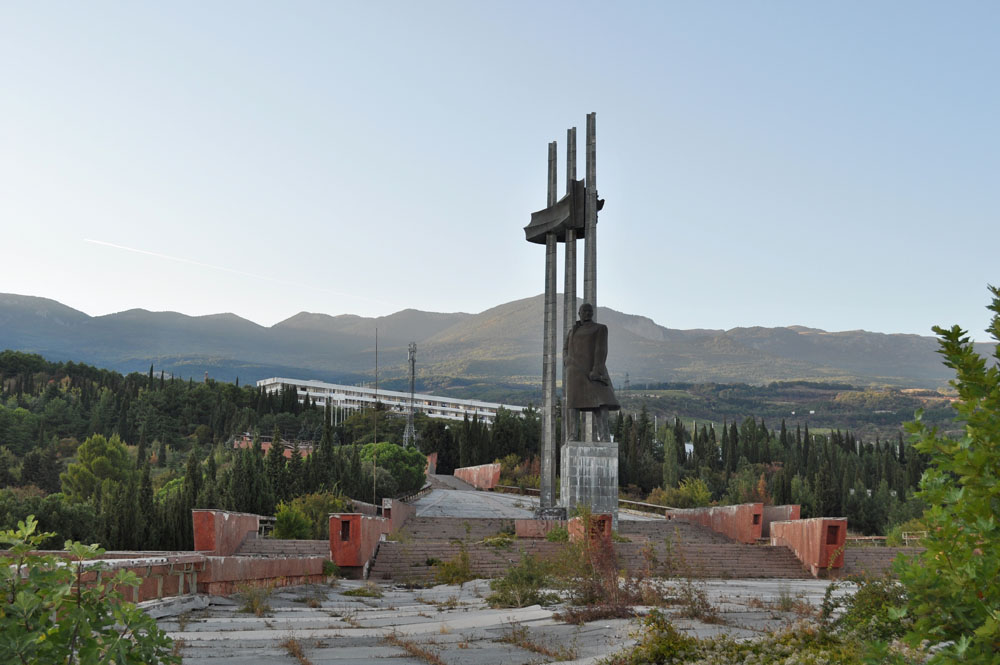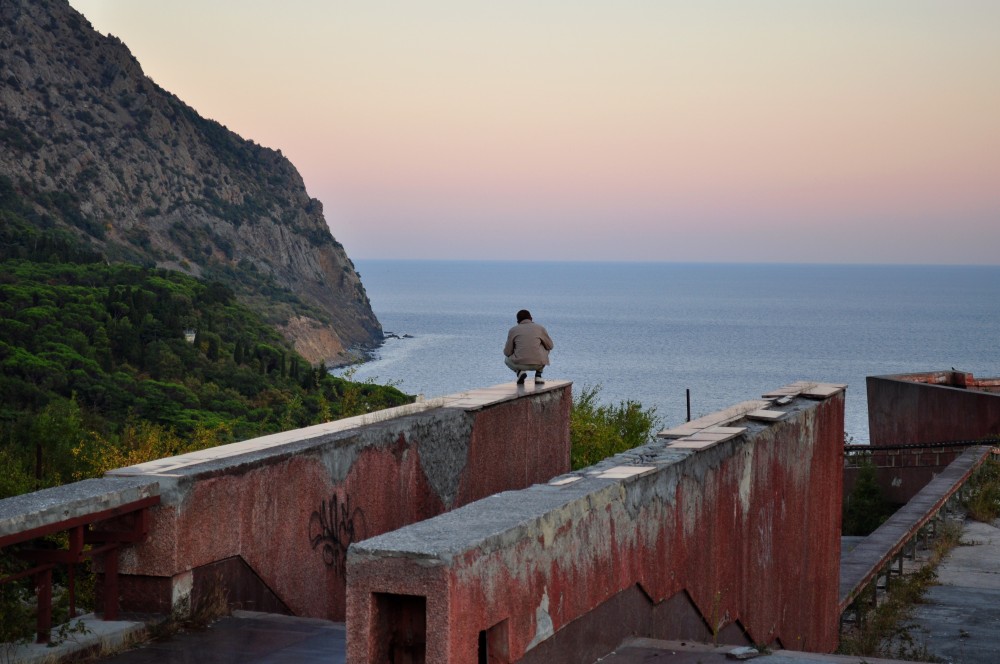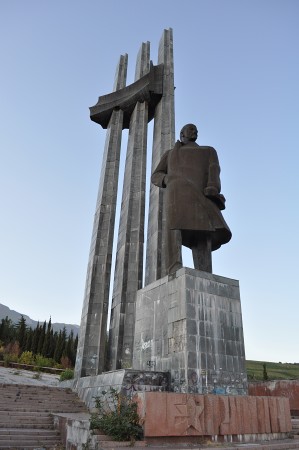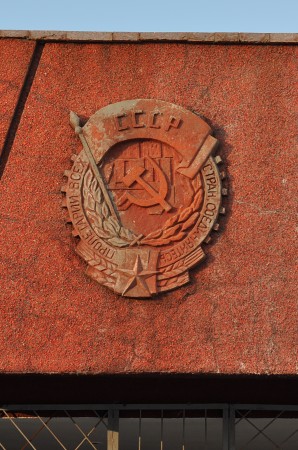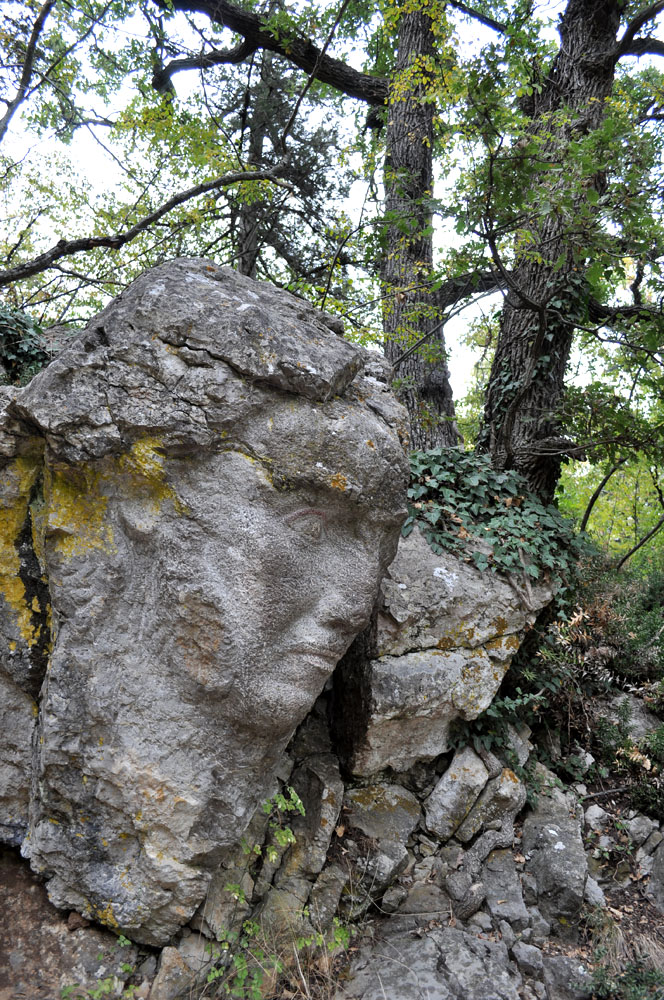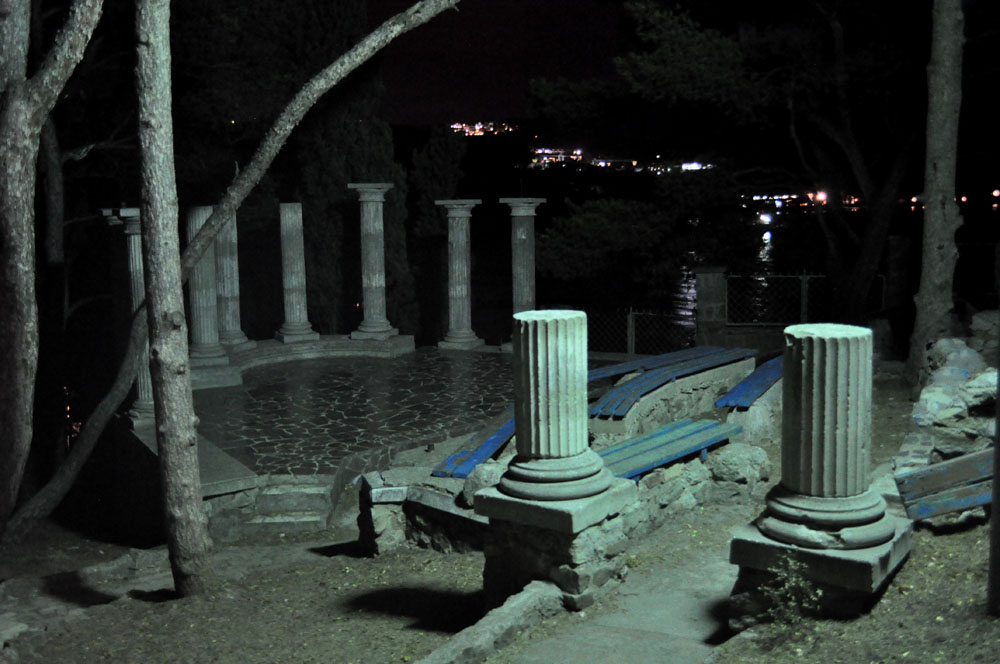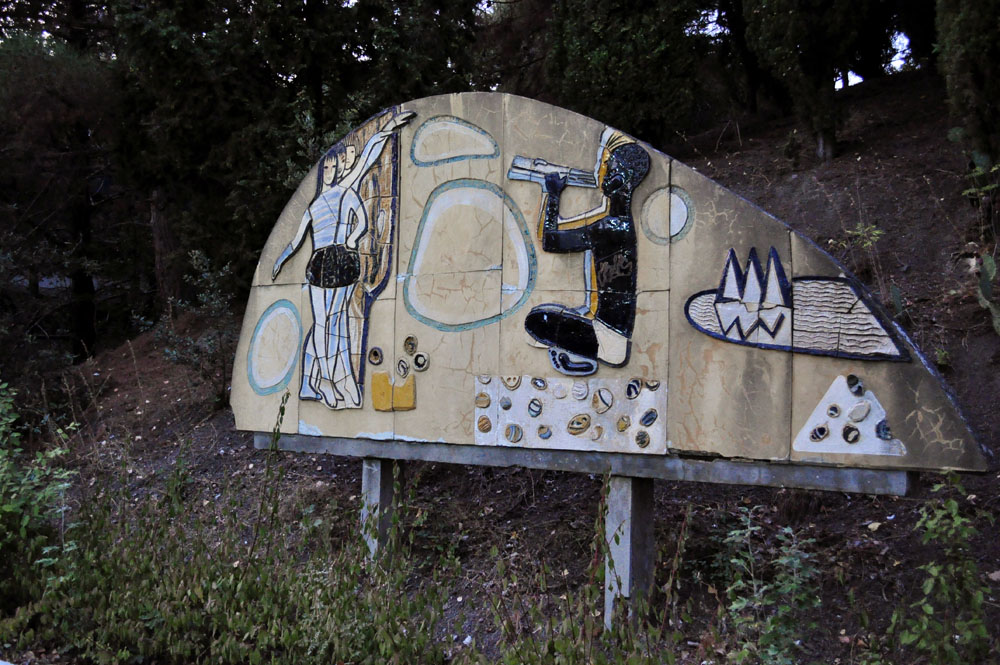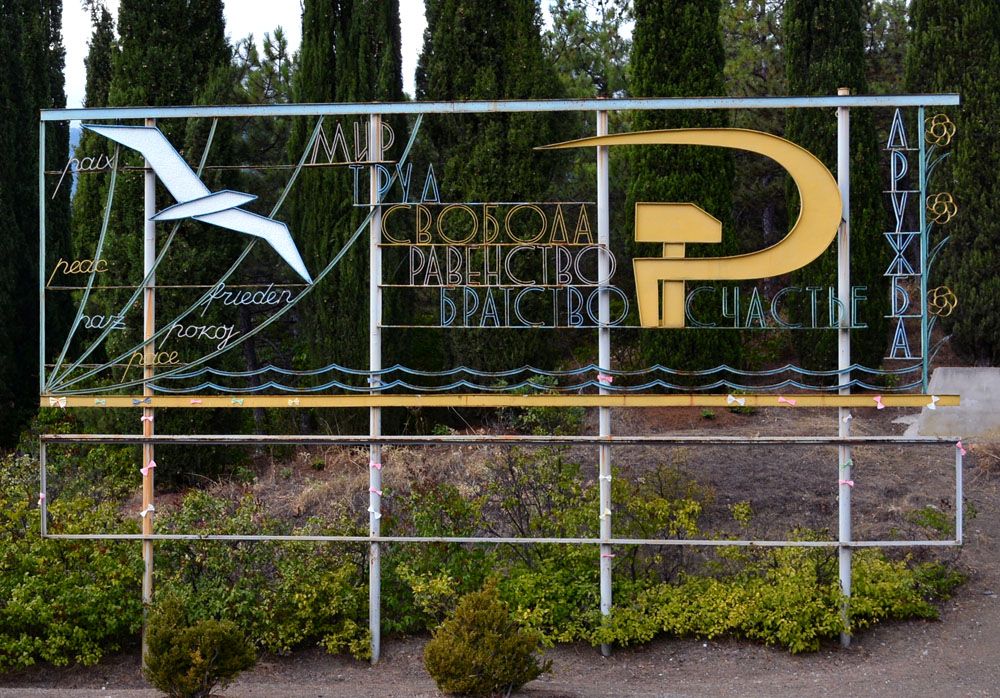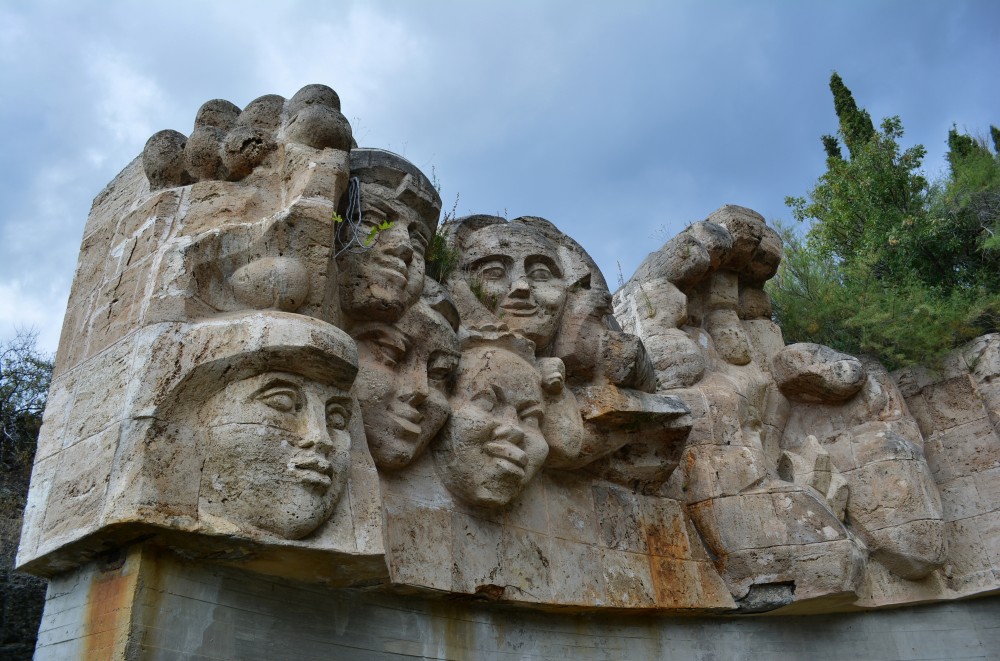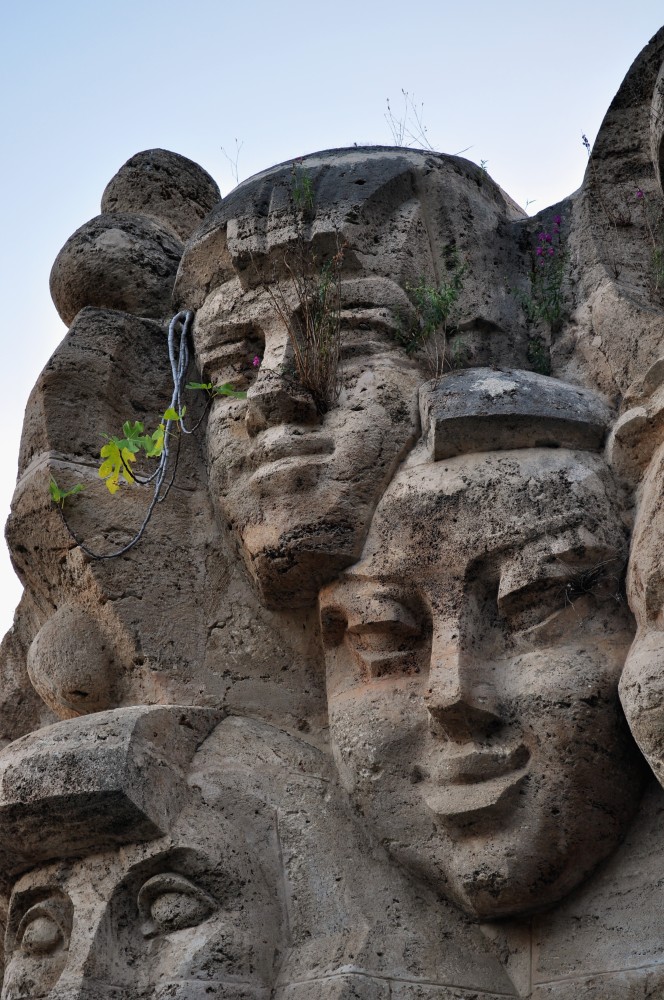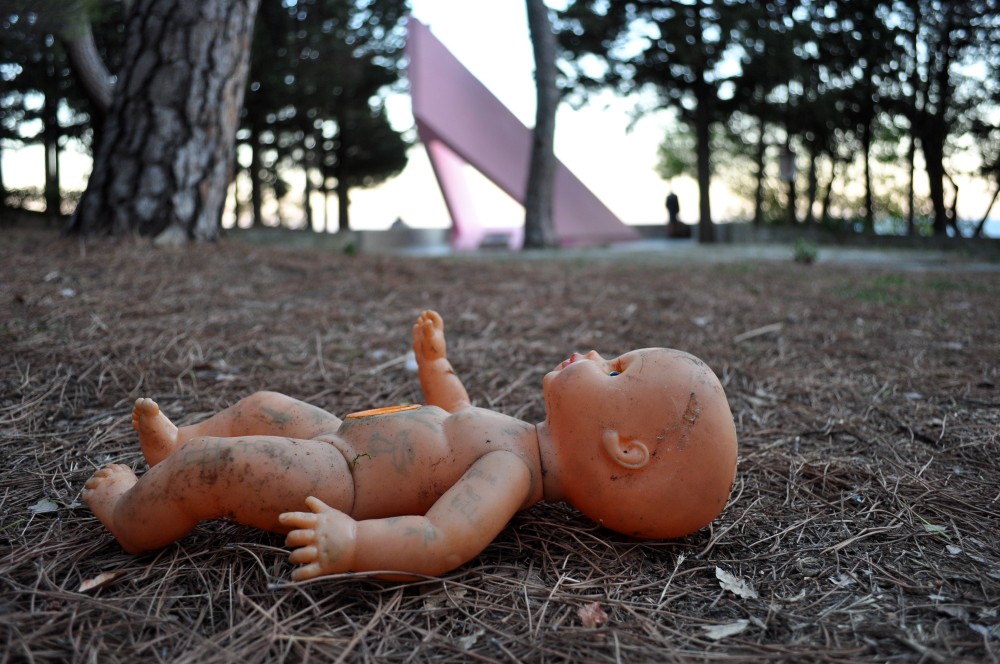Russian
poet Alexander Sergeyevich Pushkin once visited Gurzuf (long before the
existence of Artek camp and young pioneers, of course) and drew
inspiration from the area. In result, the place is over-Pushkin-ed now.
Wherever you go, you stumble over a tribute to the great poet, may it
be statues or place names (and vendors probably sell fridge magnets
with his portrait too). But children deserve something nicer than a
scowling bust, don’t they? (Although they can admire at least
one
in the camp, too.) In Pushkin’s poem Ruslan and Ludmila, the
main
hero encounters - and has a chat with - a giant head. Well, the one in
Artek is not really chatty, but emerging from the cover of trees, lit
by eerie greenish light in the evening, it can give a good scare to
unsuspecting kids. Perhaps it’s an effective way to keep them
indoors at night – or to make them read Pushkin’s
opuses in
the hope that he wrote horror stories.
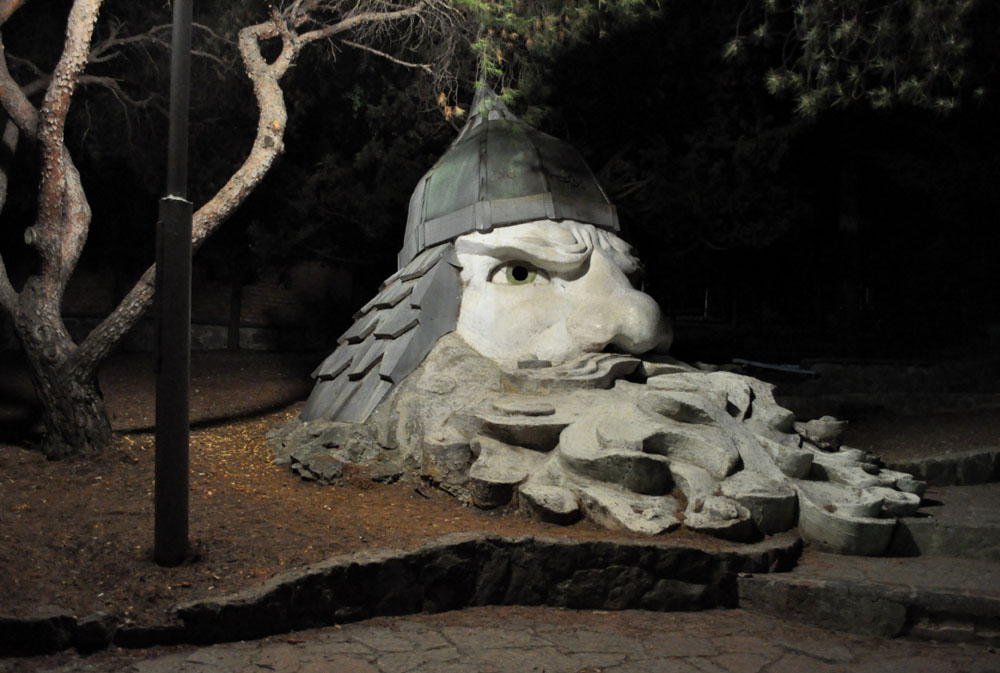
(For a
change, this giant head – not in Artek, but carved into a
rock
not far from Yalta – belongs to the master poet himself. As
if it
was not enough that his life ended in a duel, Pushkin got posthumously
beheaded by a creative sculptor...)
Long live
eclecticism! Just a few steps from the fairy-tale head, camp
visitors can reenact Greek tragedies in a proper setting. Antigona or
Oedipus in the unforgetable renditions of school children would surely
be instant hits. Well, since there used to be ancient Greek colonies on
the Crimean coast, why not pay this fitting tribute to them.
Artworks
celebrating tirelessly cheery young pioneers and the
friendship of nations are scattered around the camp. But sometimes they
make you wonder. Don’t the guys in this one look like
drinking
straight from narrow bottles, while the girls do their best to impress
them? Maybe it’s a lesson to be learnt from tender age
– guys love to drink, no matter the colour of their skin. And
not
even pretty young girls can change their habits.
Liberté,
égalité, fraternité...
and work ("труд"). We are talking about industrious
Soviets, after all, not about lazy Frenchmen sprawled in a
café,
munching croissants and drinking champagne.
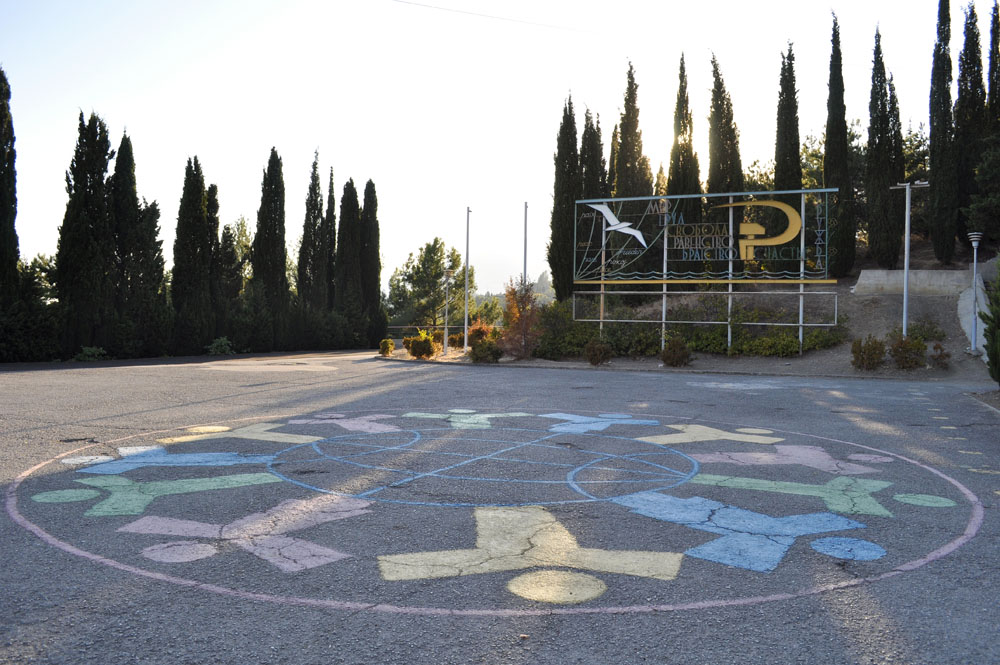
Mirror, mirror
on the wall,
which one is the most monstrous of them all? Not even the oversized
Lenin can beat the haphazard pile of giant heads (and other body parts)
closely overlooking one of the beaches. Titled "Prometheus and the
Children of the World", it is considered to be a masterpiece by the
prominent Russian sculptor Ernst Neizvestny. Prometheus has been
completely swallowed by greenery, though, and the misshapen faces
sprouting weeds and self-sown seedlings do a better job of spreading
horror than symbolising global unity and friendship.
Though speaking of horrors... better not to speculate what exactly happened here:
Pioneer camp / international children’s centre Artek: always memorable. :-)
|
